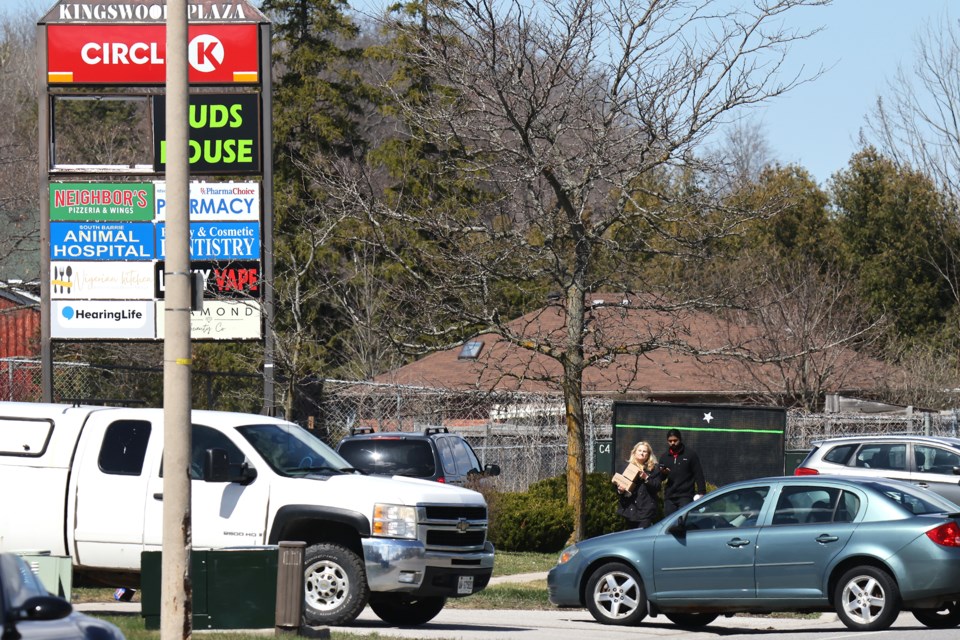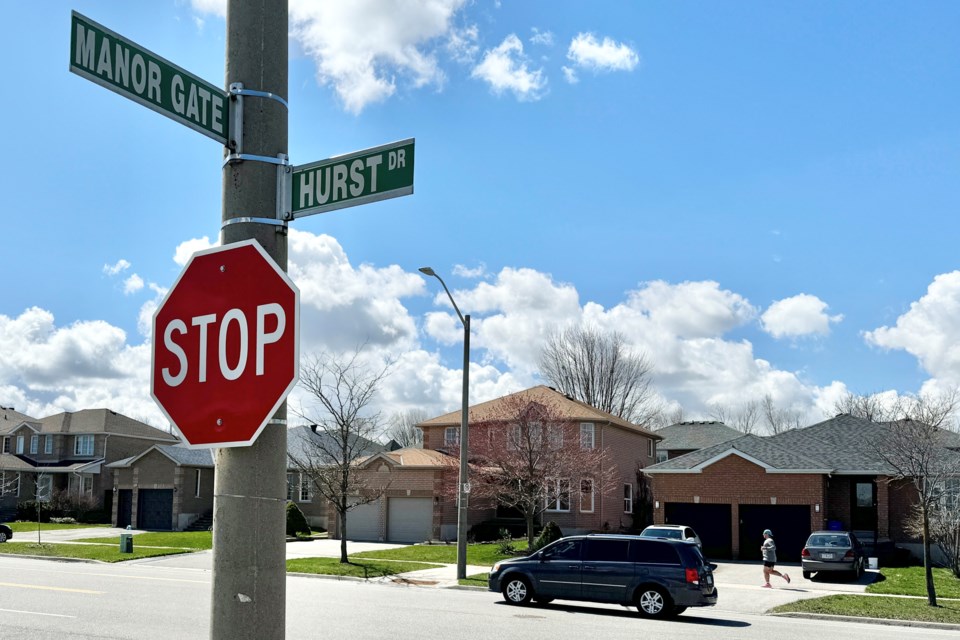Lack of foot traffic likely won’t keep a crosswalk out of a south-Barrie neighbourhood.
City council will consider final approval Wednesday night of a motion to include the construction of a pedestrian crossing, at Hurst Drive and Manor Gate, for $150,000 in next year’s capital budget.
“I don’t want to wait for an accident to happen,” said Coun. Bryn Hamilton, who represents this area. “I’ve seen near-misses a number of times. It’s not uncommon.”
“You’re dealing with an area that is almost 400 metres away from the closest intersection, so you know people are not walking 400 metres to get up to the intersection at Cox Mill (Road),” said Coun. Gary Harvey. “I don’t need to wait for somebody to get hit to know that this (the pedestrian crossing) is a good idea.”
Hurst Drive is a 14-metre, east/west arterial road with one travel lane and a bike lane in either direction, along with a two-way centre left-turn lane. There are sidewalks on both sides Hurst with Barrie Transit bus stops. The average annual daily traffic through this area is approximately 11,600 vehicles.

On the north and south sides of Hurst there are single-family homes with driveways, and on the south side, 170 metres east of Cox Mill Road, there is the Kingswood Plaza.
City staff analyzed the eight-hour pedestrian and vehicle volume on Hurst Drive. During that time there were seven pedestrians crossing north/south on Hurst Drive, and 6,444 vehicles travelling through the study area.
This does not meet the minimum pedestrian volume requirements, but does meet the vehicle volume for a pedestrian crossing.
But the numbers don’t tell the entire story, said Mayor Alex Nuttall.
“Parents aren’t letting their kids go there to cross. You’re not going to capture (count) them, because they’re been trained not to go there. But there still are times when the crossings are taking place,” he said, noting nearby schools.
“This isn’t the Hurst Drive that I grew up skateboarding on," the mayor added. “It is now a thoroughfare. It’s only gotten worse in the sense of the amount of traffic. Something’s got to be done here. It doesn’t work for pedestrian traffic, it doesn’t work for road safety.”
“A pedestrian crossing in this area has been the request of residents for a number of years now,” Hamilton said. “This for me is the No. 1 road safety concern in my ward.
“I think it’s worthwhile, even though it didn’t reach the pedestrian volume," she added.
Ontario’s Traffic Manual says there need to be 100 or more pedestrians and 750 vehicles during an eight-hour period to warrant a pedestrian crossing. Hurst had seven pedestrians and 6,444 vehicles.
Only Deputy Mayor Robert Thomson expressed his doubts about the Hurst crossover.
“We actually might be creating the liability if (traffic is) that fast by putting a pedestrian crosswalk and not a signalized intersection,” he said. “An under-utilized crosswalk is the most dangerous thing you can put in a road.”
City staff did not recommend the pedestrian crossing at Hurst Drive and Manor Gate, saying it could result in low compliance from motorists, resulting in a dangerous pedestrian crossing.
Michelle Banfield, the city’s executive director of development services, said the exact type of pedestrian crossover on Hurst — should it receive final council approval — has not yet been determined.
Council will also consider final approval Wednesday night of a pedestrian crossing at the north leg of Mapleton Avenue and Batteaux Street/Silvercreek Crescent.
Mapleton Avenue, located in the southwest end of Barrie, is a north/south major collector road. It’s an 11-metre-wide roadway, has one lane of travel in either direction and a two-way, centre left-turn lane. There are sidewalks on both sides of Mapleton and Barrie Transit bus stops. The average annual daily traffic on Mapleton Avenue is approximately 5,400 vehicles.
And there were 168 pedestrians crossing the road during its eight hours, and 2,963 vehicles.



